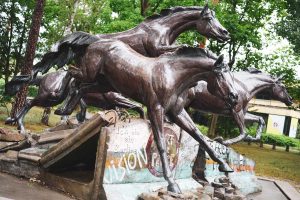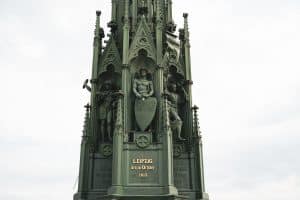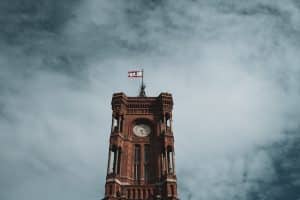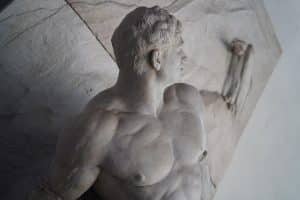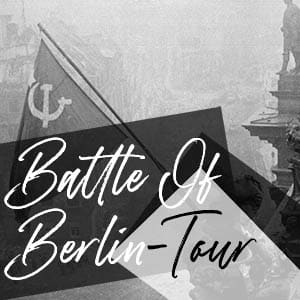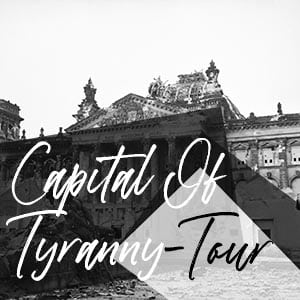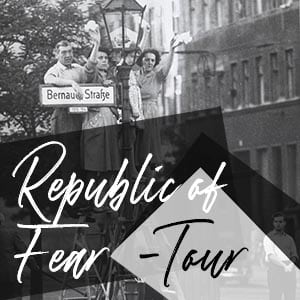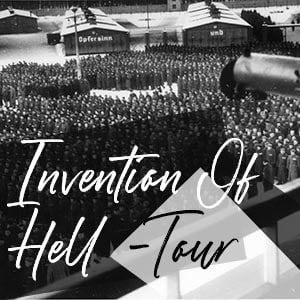The defeat of Nazi Germany in 1945 was to be conclusive; irreversible; final.
Not only did that demand the unconditional surrender of the country’s armed forces but the extirpation of the ideology that had held the country – and much of the European continent – in its grip in the span of 12 miserable years.
Democratisation, Demilitarisation, Decentralisation – and most importantly DeNazification – would be key.
Yet traces of Berlin’s time as the capital of Hitler’s regime can still be found across the city.
The task of coming to terms with Germany’s darkest chapter has been an uneasy balancing act: one that demanded the removal of certain aspects of the past, while ensuring that enough remains that it cannot be denied that it happened.
For instance, in the quest to render impotent the organisations associated with the criminality of National Socialism, the German government prohibits the display of the symbols adopted by these associations. Current German law means that any presentation of the Swastika – the symbol adopted by the Nazi movement – can be deemed anti-democractic and result in a prison sentence and/or hefty fine.
Remnants Of Nazi Berlin
There are, of course, exceptions. Where these symbols are presented for educational purposes – such as in museums or school textbooks.
But any hunt for swastikas on public display in the German capital nowadays is bound to lead to a dead end.
However, not everything from this period has been purged.
Even in the capital of modern tolerant Germany it is still possible to find original artefacts – such as statues, weapons, and a plethora of post-war memorials that remind us of the country’s intolerant past.
In this guide we will look at the remnants of Nazi Berlin – what is to be found and where it is hiding…

01 | The Olympic Bell
One of the few publicly visible instances of Nazi iconography in Berlin, this Olympic Bell was commissioned and cast for the 1936 Summer Olympics – also known as the ‘Nazi Games’. Damaged by anti-aircraft fire during the Second World War it now rests outside Berlin’s Olympic Stadium – with a variation on the German eagle that graced the helmets of Nazi era soldiers, and the Nazi swastika disfigured although still discernible.
The bell tower itself was extensively damaged at the end of the war but has since been reconstructed and offers a magnificent panoramic view across the stadium and of Berlin – but also as far west as neighbouring Potsdam.
–
Address: Olympischer Platz 3, 14053 Berlin
Website: Olympiastadion Berlin
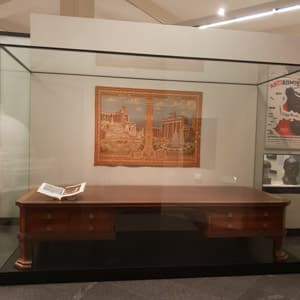
02 | Adolf Hitler's Desk
There are very few objects directly connected to Nazi leader, Adolf Hitler, that have survived the Second World War to be exhibited in Berlin. Looting and treasure hunting, rife in the aftermath of the Battle of Berlin, deprived the city of many of these artefacts. Undoubtedly, also, the issue of weighing glorification against educational value also needs to be taken into account – in a country where the display of “symbols of unconstitutional organisations” is prohibited.
This mammoth desk, however, that previously stood in Hitler’s personal study can be found on display in the German Historical Museum.
–
Address: Unter den Linden 2, 10117 Berlin
Website: Deutsches Historisches Museum
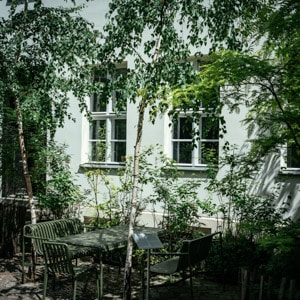
03 | The Auschwitz Trees
These 320 birch trees, nursed in the soil surrounding the Auschwitz-Birkenau death camp, were introduced in Berlin back in 2012 – a provocative way of commemorating the victims of the Holocaust right in the heart of the city that previously served as the capital of Nazi Germany.
The work of Polish conceptual artist, Lukasz Surowiec, they can be found in the former Jewish section of the Mitte district – in the courtyard of the KW Institute – and also outside the Grünewald train station (one of the three major deportation stations used during the Nazi period to ‘resettle’ Jewish Berliners to be murdered further east in places like Auschwitz).
–
Address: Various Locations
Website: Berlin Bienalle Site
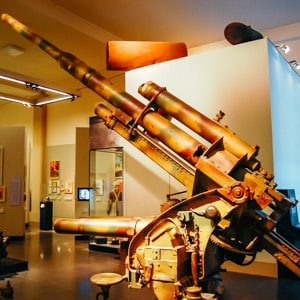
04 | The 88mm Flak Canon
Part of the arsenal of weapons at the disposal of Berlin’s desperate defenders in April/May 1945, the 88mm Flak Canon was originally intended as an anti-aircraft weapon (FLugAbwehrKanone – FLAK). In the face of advancing tanks, however, it was often reappropriated as an anti-armour weapon. Considered one of the most effective weapons of the Second World War, the 88mm Flak Canon’s use in this dual role dated as far back as the Spanish Civil War – and it would eventually be adapted as the main battlegun of the Tiger I tank.
This preserved example of an 88mm Flak 36 is now exhibited inside the German Historial Museum.
–
Address: Unter den Linden 2, 10117 Berlin
Website: Deutsches Historisches Museum
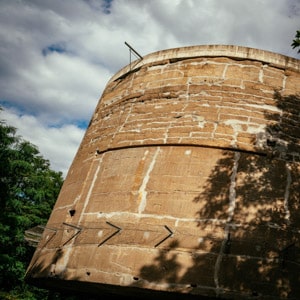
05 | The Schwerbelastungskoerper
Doubts about the feasibility of Adolf Hitler’s plan to establish Berlin as the capital of the world – the Welthauptstadt Germania – led to the creation of this heavy load testing weight in the district of Schöneberg in 1941. Introduced to measure the level of ground subsidence, in preparation for the construction of a Truimphal Arch – intended to be three times larger than the Arc de Triomphe in Paris – the Schwerbelastungskörper embarrasingly revealed the need for expensive stabilisation measures to make the ground suitable for construction.
This monstrous cyclinder remains a physical proof of the colossal and delirious vision of Hitler’s future capital.
–
Address: General-Pape-Straße 34a, 12101 Berlin
Website: The Schwerbelastungskörper
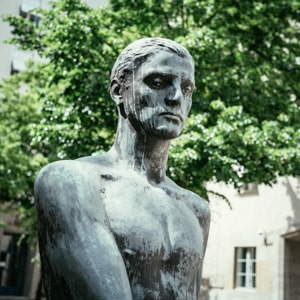
06 | The Stauffenberg Memorial
The assassination attempt against Adolf Hitler on July 20th 1944 was largely coordinated by a group of German Army Reserve officers based at the Bendlerblock Headquarters in Berlin, which now houses the fantastic German Resistance Museum. The plan to mobilise the German Replacement Army to take control of German cities, disarm the SchutzStaffel (SS), and arrest the Nazi leadership once Hitler had been assassinated failed after assassin Claus von Stauffenberg’s unsuccessful attempt to kill Hitler with a bomb placed at his Wolf’s Lair hideout.
This memorial statue in the courtyard marks the location where von Stauffenberg was executed by firing squad – less than 24 hours later.
–
Address: Stauffenbergstraße 13, 10785 Berlin
Website: German Resistance Memorial Center
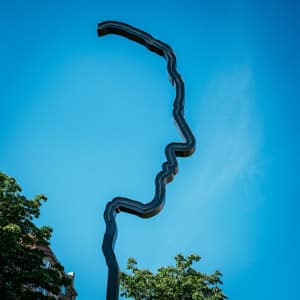
07 | Georg Elser Memorial
To date there are more than forty known assassination attempts against Nazi leader Adolf Hitler that have been registered. One of the most significant occured in 1939, when a young carpenter named Georg Elser tried to blow up Hitler and key members of the Nazi leadership at a beer hall in Bavaria, only to narrowly miss and be arrested by border guards when attempting to flee to Switzerland. Elser was tortured, imprisoned, and finally executed in 1945.
This memorial to the lone assassin can be found on Wilhelmstrasse – a stone’s throw away from the site of the Führerbunker, where Hitler would eventually take his own life in 1945.
–
Address: Wilhelmstraße 49, 10117 Berlin
Website: None
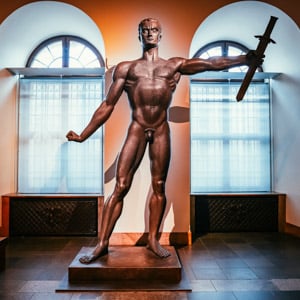
08 | Die Wehrmacht Statue
When Adolf Hitler’s immense New Reich Chancellery, co-designed by court architect Albert Speer, was deemed complete in 1939 – two statues from sculptor Arno Breker were chosen to feature in the court of honour entrance, the first thing visiting dignitaries would see on arrival.
A copy of one of these statues, Die Wehrmacht (the Army), is now exhibited in the foyer of the German Historical Museum – having been recast in the 1980s. The original was lost at the end of the war – which makes this reproduction even more fascinating. The second statue, Die Partei (the Party) can be found on the grounds of the Arno Breker museum in Nörvenich.
–
Address: Unter den Linden 2, 10117 Berlin
Website: Deutsches Historisches Museum

09 | The Cross of Nails
When the Second World War came to its overdue end, reuniting the populations of the former belligerent nations in peace and ensure that such a tragedy never happen again became a high priority. One of the most recognisable symbols of this sentiment is the Coventry Cross of Nails, named after the English city devastated by a Luftwaffe air raid in 1940 – and made of charred nails salvaged from the ruin of the city’s Cathedral. Further crosses were subsequently made and given to various organisations as a sign of friendship and hope.
This cross of nails can be found in the entrance room of the war damaged Kaiser Wilhelm Memorial Church.
–
Address: Breitscheidplatz, 10789 Berlin
Website: Kaiser-Wilhelm-Gedächtnis-Kirche
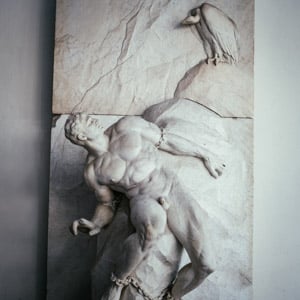
10 | The Prometheus Statue
A strange choice of allegory, perhaps, considering the previous ownership of this impressive statue, depicting the Greek myth of Prometheus in chains – the Titan who stole fire from the gods to give it to humanity, only to be condemned to eternal bondage as a result. Created in 1902 as one of Neo-Baroque artist Reinhold Begas’ last works, this piece survived the Second World War as part of Nazi court architect Albert Speer’s personal collection – walled up in the Academy of Arts until discovered during renovation work.
It can now be found hidden away at the back of the building when entering near the Memorial for the Murdered Jews of Europe.
–
Address: Pariser Platz 4, 10117 Berlin
Website: Academy of Arts

11 | The Empty Library
In the centre of modern-day Bebelplatz – previously known as Opera Square (Opernplatz) – is a memorial for an event that has come to be known simply as the ‘Nazi Book Burning’ – when on May 10th 1933 some 20,000 pillaged books by banned writers were condemned to flames on this square. In-fact organised by the German Student Association, the event would be attended by Nazi Propaganda Minister Joseph Goebbels, and officially portrayed as a day of “Action Against The Un-German Spirit”.
Now commemorated by this empty library, sunk into the ground beneath the square – the work of Israeli artist Micha Ullmann – and a plaque presenting the prescient words of Heinrich Heine.
–
Address: Unter den Linden, 10117 Berlin
Website: None
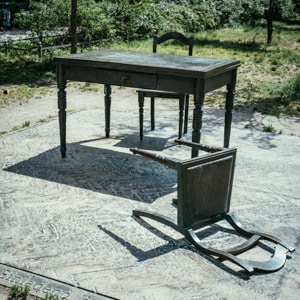
12 | The Deserted Room
The home has no walls. The chair has fallen. The residents have disappeared. This bronze memorial on Koppenplatz, entitled ‘The Deserted Room’ is dedicated to the victims of the Nazi Reichskristallnacht attacks (known in German as the November Pogrom). Commissioned by the East German government in 1988, it was only later added to this former Jewish neighbourhood in 1996 – evocative of the tragic scenes that occured in the homes in the area during National Socialist rule.
Fused around the base of the memorial is a poem from German-Jewish writer, Nelly Sachs, which begins: “…O die Wohnungen des Todes, (Oh the houses of death)…
–
Address: Koppenplatz, 10115 Berlin
Website: None
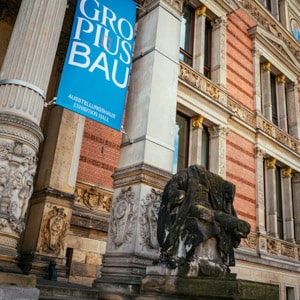
13 | The Mutilated Statues
Keeping with the theme of the Martin Gropius Bau as a venue for arts, designed by Martin Gropius (great uncle of Walter Gropius, the ‘founding father’ of the Bauhaus movement), these two statues on the northern side of the building depict two famous German artists – Peter Vischer the Elder (left) and Hans Holbein the Younger (right).
Extensively damaged during the Second World War, likely either by the Anglo-American air raids or trophy hunting Soviet soldiers, they are preserved in-situ in their mutilated form. Damaged statues remain a common sight throughout the city, although these two are particularly prominent and often encountered due to their location.
–
Address: Niederkirchnerstraße 7, 10963 Berlin
Website: Martin Gropius Bau

14 | The Bridge of Scars
While estimates vary as to the exact percentage of Berlin that lay ruined by the end of the Second World War, certainly by modern standards much of the former Nazi capital was in a truly unlivable state – courtesy of the hundreds of Anglo-American air raids and the Soviet ground invasion.
This bridge near the government quarter still bears the obvious pockmarked damage of bullets and shrapnel. Especially in the former Cold War East of Berlin, there remains lots of this damage to be found – courtesy of the lack of expenditure on repairs by the government of the GDR, and the contemporary desire to preserve these traces of history in place.
–
Address: Reinhardtstraße 52, 10117 Berlin
Website: None
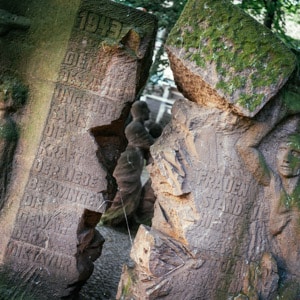
15 | The Rosenstrasse Memorial
When in February 1942, Berlin’s Gestapo arrested thousands of Jewish men – many married to non-Jewish women – some 1,800 were gathered inside a welfare office for the Jewish community, located on Rosenstrasse. In response, a demonstration was organised by the wives of these men, calling for their release – which eventually came after more than a week of protesting.
The memorial on Rosenstrasse commemorating this event is a focal point of the historical debate on the effectiveness of collective action against the Nazi state – whether these wives achieved their goal through protest or in-fact their husbands’ release was more a result of internal Nazi Party politics.
–
Address: Rosenstraße 2, 10178 Berlin
Website: The Visit Berlin site

16 | Willi Lammert's Memorial
Persecuted by the Nazis as a ‘degenerate artist’ and deported to Siberia by the Soviet authorities – only to be released as a ‘special exile in perpetuity’ – Willi Lammert eventually settled in East Germany to work as a sculptor and dedicate himself to memorialising the victims of the Ravensbrück Concentration Camp, near Berlin.
His most celebrated work being the ‘Pietà of Ravensbrück’ overlooking the Schwedtsee next to the camp. This piece, commemorating the Jewish victims of National Socialism, was originally intended for exhibition at the camp memorial but now sits outside the former Jewish cemetery in Berlin’s central Mitte district.
–
Address: Große Hamburger Strasse 25, 10115 Berlin
Website: The Jewish Cemetery

17 | Kindertransport Memorial
Over a period of nine months following the 1938 Reichskristallnacht attacks (the November Pogrom), thousands of predominantly Jewish children were permitted by the Nazi state to emigrate to western European countries like Great Britain – as part of a large-scale evacuation programme known now as the Kindertransport (Refugee Children’s Transport). By the outbreak of the Second World War in September 1939, some 10,000 children had made it to Great Britain.
This bronze sculpture, entitled ‘Trains to life; Trains to death’ at Friedrichstrasse station is the second of five memorials designed by artist Frank Meisler – himself a Kindertransport refugee, who left Friedrichstrasse in August 1939.
–
Address: Georgenstraße 14, 10117 Berlin
Website: None

18 | The Executed Soldiers
As the Nazi regime convulsed in its dying throes, Berliners experienced the kind of horror that the city had largely been spared for the duration of the Second World War – and as part of a last ditch attempt to defend the city against the Soviet forces descending on Hitler’s capital thousands of civilians – old and young – were press ganged into military service.
Suspected deserters were subject to swift courts martial and execution, such as these two young German soldiers hanged by an SS unit and commorated on this rare plaque under the Friedrichstrasse station – fighting in a war that had already been lost, to defend a regime that prefered slaughter to surrender.
–
Address: Georgenstraße 14/17, 10117 Berlin
Website: Friedrichstrasse Station
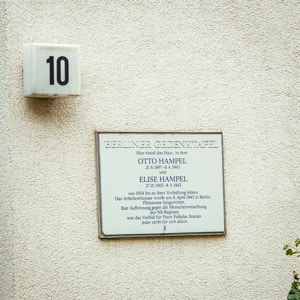
19 | Alone In Berlin
The real life inspiration for Hans Fallada’s 1947 novel Jeder stirbt für sich allein (Alone in Berlin), the working-class Hampel couple lived at this address in Berlin Wedding – now commemorated by a porcelain plaque. After the death of their son in France, the couple began engaging in acts of civil disobedience, distrubuting postcards urging resistance before being discovered by the Nazi regime and executed.
Italian writer and Holocaust survivor, Primo Levi, famously described Fallada’s work as the greatest book ever written about German resistance to the Nazis. When an English translation was finally released in 2009, it became a runaway bestseller.
–
Address: Amsterdamer Straße 10, 13347 Berlin
Website: None

20 | The Sachsenhausen Gate
Prisoners force marched into the Sachsenhausen Concentration Camp, between 1936 and 1945, would be confronted daily with this infamous lettering – Arbeit Macht Frei (Work makes one free) at the camp’s main Tower A entrance. While the exact meaning of the phrase is still debated by historians and survivors to this day; it served as an added humiliation to the unforgiving and brutal reality of the camp.
The sign now stands preserved to offer visitors the chance to not only enter the camp memorial through this gate, and pass this insulting slogan, but experience what thousands of prisoners were denied – the opportunity to leave the camp and return to life and normality without the burden of brutality and degradation.
–
Address: Strasse der Nationen 22, 16515 Oranienburg
Website: Sachsenhausen Memorial
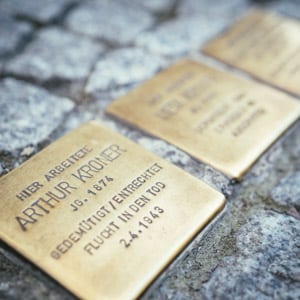
21 | The Stolpersteine
Personalising a genocide whereby millions of people lost their lives is an important, and effective, way of remembering those who were murdered. Thousands of these bronze Stolpersteine (Stumbling Stones) can be found across Europe, listing the names and dates of birth, and often dates of death, of people who fell victim to the National Socialist regime.
These three commorate a mother, father, and young daughter – the daughter who was deported to Auschwitz and the two parents who faced with the extent of this tragedy preferred instead to take their own lives. They can be found on the pavement in front of the site of the magic shop the family once owned.
–
Address: Friedrichstrasse 55, 10117 Berlin
Website: The Stolpersteine Site
Our Related Private Tours
Learn more about the Battle of Berlin and explore this urban battlefield with our Battle of Berlin tours.
Learn more about the history of Nazi Germany and life in Hitler’s Third Reich with our Capital Of Tyranny tours.
Learn more about the history of East German and life behind the Iron Curtain with our Republic Of Fear tours.
Learn more about the history of Prussia and the life of Frederick the Great with our Glory Of Prussia tours.
Learn more about the Nazi Concentration Camp industry and visit Sachsenhausen on our Invention of Hell tours.


